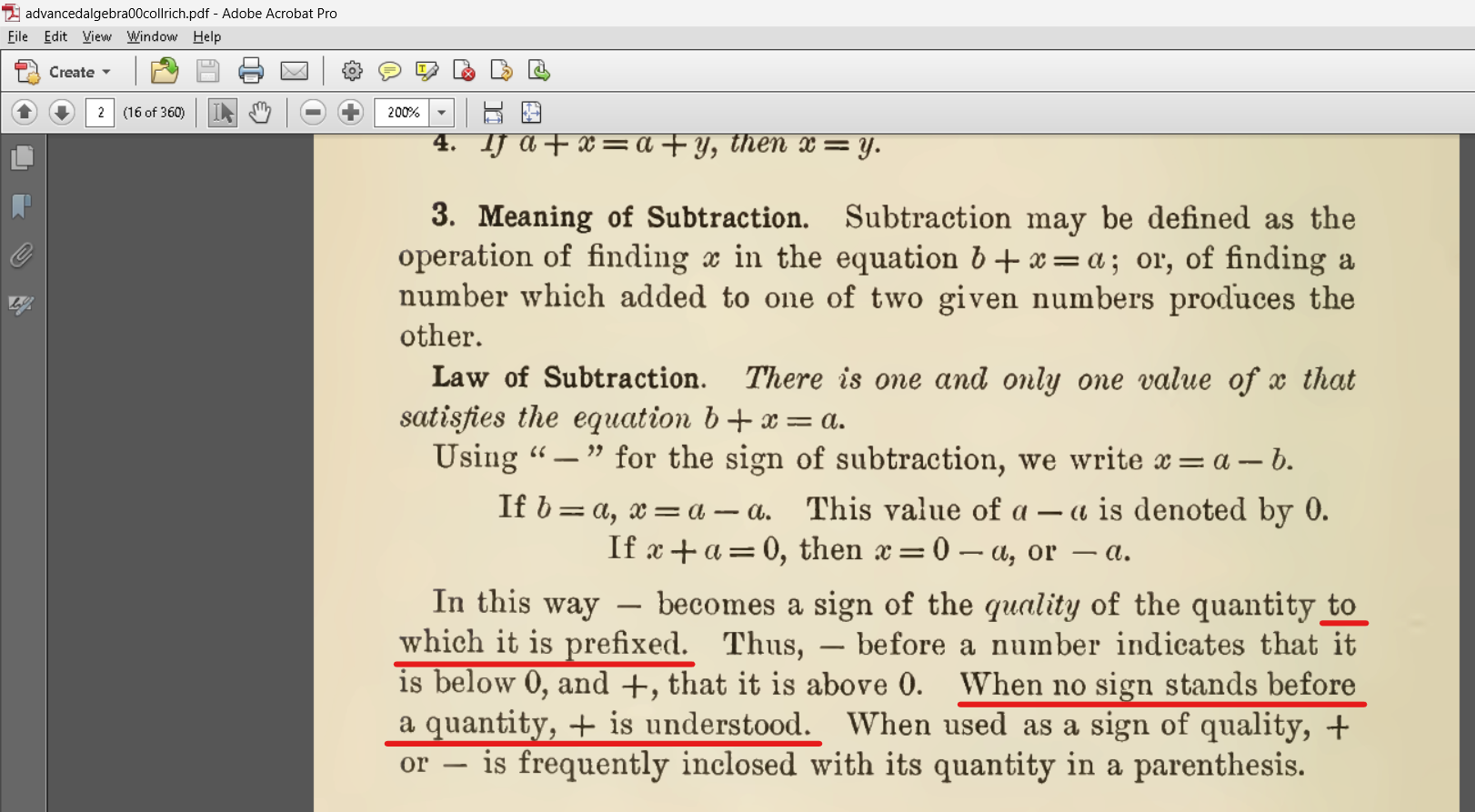

I fully agree that if it comes down to “left to right”
It never does
But I’ve just shown why that “rule” is a common part
No you didn’t. You showed you didn’t understand the rules. Doing addition first for 10-1+1 is 10+1-1, not 10-(1+1). It literally means add all positive numbers together first, which are +10 and +1, as per Maths textbooks…

Note in the above simplification of the coefficients we have 6-11+5-7+2=6+5+2-11-7=13-18=-5, and not, as you claim 6-(11+5)-(7+2)=6-16-9=-19
because it is so weird and quite esoteric
It’s a convention, not a rule, and as such can be completely ignored by those who understand the rules. See literal textbook example















No it isn’t.
You can do it in any order anyway
left to right 1-2+3=-1+3=2
addition first 1+3-2=4-2=2
subtraction first -2+1+3=-1+3=2
right to left 3-2+1=1+1=2
And you showed that you were one of them. Every answer you got other than 4 was wrong, because you didn’t understand the rules. spoiler alert: doing it in different orders never means add brackets to it. Addition first for 10-1+1 is 10+1-1, not 10-(1+1). See previous textbook example
They exist because people like you make mistakes when you try to do it in a different order. Either learn how the rules work or stop spreading disinformation. Well, you should stop spreading disinformation regardless.